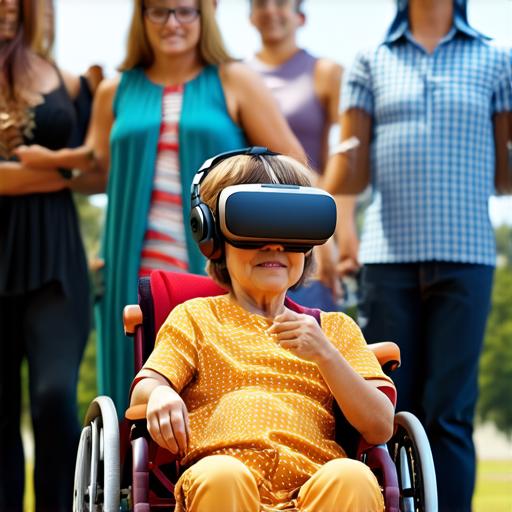
How does virtual reality help in making experiences more accessible to everyone?
Virtual reality (VR) is transforming the way we experience the world. From gaming and entertainment to education and healthcare, VR technology is making it possible for people to explore new environments, interact with different cultures, and even travel from the comfort of their own homes.
How Virtual Reality is Helping People With Disabilities
Virtual reality has the potential to change the lives of people with disabilities by providing them with immersive and interactive experiences that they may not be able to have otherwise. For example, people who are visually impaired can use VR headsets equipped with audio descriptions to explore virtual environments, while those with mobility impairments can navigate through virtual worlds using controllers or specialized devices.
One great example of this is the work being done by the Virtual Reality Society for the Blind (VRSB). The VRSB uses VR technology to help visually impaired individuals develop new skills and explore new environments. For example, they use VR simulations to teach people how to navigate public transportation systems or how to cook a meal.
By providing these experiences in a virtual environment, the VRSB is able to reach people who may not have access to traditional learning opportunities.
Virtual Reality in Education
Virtual reality is also being used in education to make learning more engaging and accessible. For example, students can use VR headsets to explore historical events or scientific concepts in a way that is not possible with traditional textbooks or lectures.
One great example of this is the work being done by the VR Lab at the University of California, Berkeley. The VR Lab uses VR technology to create immersive learning experiences for students in fields like biology, chemistry, and physics. By providing these experiences in a virtual environment, the VR Lab is able to reach students who may not have access to traditional labs or field trips.
Virtual Reality in Healthcare
Virtual reality is also being used in healthcare to provide patients with immersive and interactive experiences that can help them manage chronic conditions or recover from injuries. For example, patients who are recovering from physical therapy can use VR technology to simulate real-life movements and practice new skills in a safe and controlled environment.
One great example of this is the work being done by the Virtual Reality Medical Center (VRMC). The VRMC uses VR technology to provide patients with immersive experiences that are designed to help them manage chronic conditions like arthritis or fibromyalgia. By providing these experiences in a virtual environment, the VRMC is able to reach patients who may not have access to traditional therapy options.

Virtual Reality in Tourism and Hospitality
Virtual reality is also being used in tourism and hospitality to provide people with immersive and interactive experiences that can help them explore new destinations or plan their next vacation. For example, travelers can use VR technology to virtually visit different hotels, resorts, and vacation destinations before making a final decision.
One great example of this is the work being done by the Virtual Reality Society for Tourism (VRST). The VRST uses VR technology to create immersive experiences that allow travelers to explore different destinations in a way that is not possible with traditional travel methods. By providing these experiences in a virtual environment, the VRST is able to reach people who may not have access to traditional travel options.


